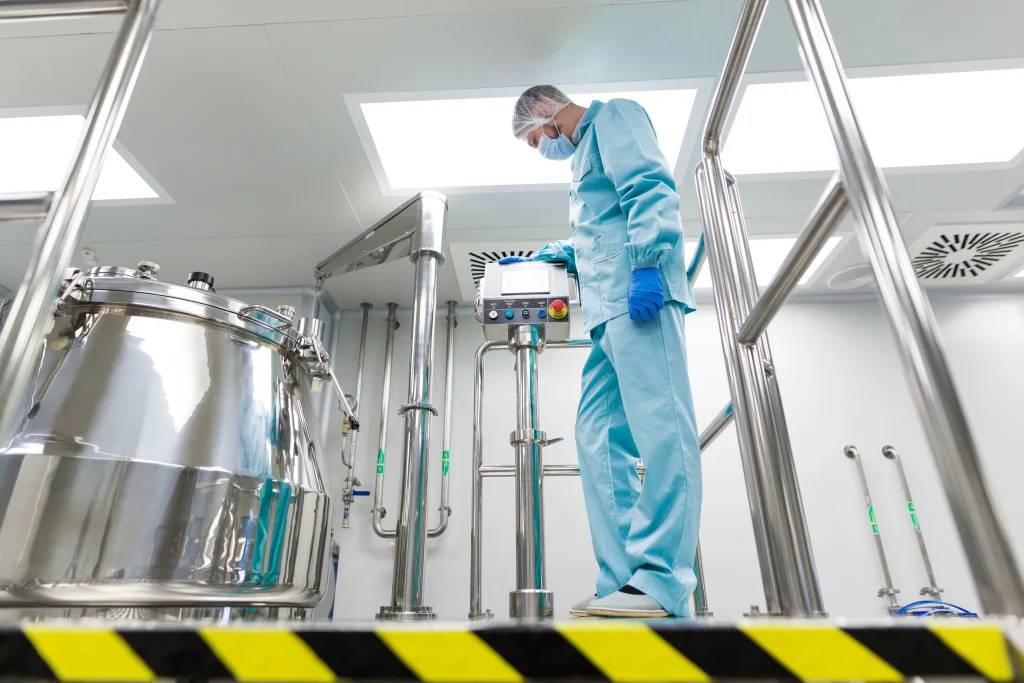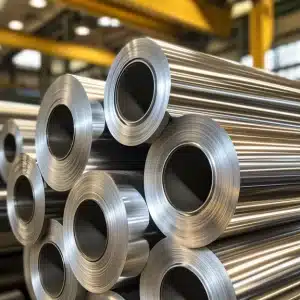
How the Pressure Vessels Aerospace Industry Powers Flight
In the modern age of aviation and space exploration, the pressure vessels aerospace industry plays a foundational role in advancing technology, safety, and performance. From rocket fuel tanks to cabin pressurization systems, pressure vessels are crucial in virtually every aerospace system that involves storing or regulating gases and fluids.
In aerospace applications, we use pressure vessels to store and control high-pressure gases and fluids critical for propulsion, life support, and structural balance. They’re essential components in fuel systems, enabling the safe containment of volatile fuels in rockets and aircraft. Similarly, they support hydraulic systems that power landing gear, control surfaces, and actuation mechanisms.
Pressure vessels also contribute to the performance of satellites, launch vehicles, and crewed aircraft. Especially in space systems, where weight and space are at a premium, we engineer these vessels to be ultra-lightweight yet strong enough to withstand the vacuum of space and extreme temperature changes.
The durability and safety offered by pressure vessels ensure the long-term functionality of aerospace systems in the most extreme environments, including high-altitude flights, suborbital trajectories, and deep-space missions.
Materials and Design Standards for Aerospace Pressure Vessels
In the pressure vessels aerospace industry, the materials and design standards are among the strictest in engineering. This is because aerospace systems must balance structural strength, minimal weight, and resistance to extreme temperatures and pressure fluctuations.
Common materials used in aerospace-grade pressure vessels include:
- Titanium alloys: prized for strength-to-weight ratio and corrosion resistance.
- Aluminum: lightweight and cost-effective for low-pressure systems.
- High-strength steels and composite materials: ideal for vessels requiring enhanced fatigue resistance.
Aerospace vessels must, of course, meet exacting standards established by organizations such as:
- ASME (American Society of Mechanical Engineers): providing pressure vessel design codes.
- NASA: enforcing mission-specific requirements for space-bound equipment.
- FAA (Federal Aviation Administration): ensuring safe application in commercial and military aviation.
Designers must also consider fatigue life, pressure cycling, and thermal stress to ensure each vessel can handle repeated launches, landings, and thermal fluctuations. Therefore, safety factors are tightly controlled, and designers rigorously review flight before engineers approve each vessel.
Customization and Innovation in Aerospace Applications
Customization has become a defining feature of the pressure vessels aerospace industry, enabling engineers to develop highly specialized, purpose-built solutions for the demanding requirements of modern aerospace missions. As aerospace systems grow more advanced—with tighter tolerances, higher performance expectations, and extreme environmental conditions—the pressure vessels aerospace industry has responded with innovation in design, materials, and fabrication techniques.
Whether supporting fuel containment in propulsion systems, maintaining critical pressure levels in life-support modules, or operating within cryogenic environments, pressure vessels in the aerospace industry must meet the most rigorous standards for safety, weight, and reliability. Advanced pressure vessels aerospace industry solutions now integrate composite materials, modular components, and smart monitoring capabilities—making them essential to next-generation aircraft, spacecraft, and defense applications.
By prioritizing customization, the pressure vessels aerospace industry ensures that each vessel is precisely engineered for its intended function, contributing to mission success and long-term system integrity.
Each vessel must be tailored to specific needs:
- Spacecraft need pressure vessels that function in a vacuum and resist radiation.
- Rockets require cryogenic tanks for liquid propellants.
- UAVs (unmanned aerial vehicles) may need ultra-light compressed gas systems for altitude control.
Today, we are also designing pressure vessels with embedded sensors, allowing real-time monitoring of pressure, temperature, and structural health. These smart vessels support data-driven maintenance and improve flight reliability.
Another exciting area is the use of composite pressure vessel technology. Carbon fiber-reinforced composites significantly reduce weight without compromising strength. This makes them ideal for reusable spacecraft and sustainable aviation fuel systems, where energy efficiency is paramount.
As aerospace shifts toward reusability and sustainability, the ability to customize pressure vessels for extended life cycles, multiple missions, and clean fuel technologies will define the next era of innovation.
Why the Pressure Vessels Aerospace Industry Matters
The pressure vessels aerospace industry plays a vital role in advancing America’s aerospace capabilities—from commercial aviation to deep space missions. These highly specialized vessels enable safe storage and regulation of critical gases and fluids, while withstanding the extreme conditions of flight and space travel.
Engineered with advanced materials, custom configurations, and rigorous compliance standards, aerospace pressure vessels deliver unmatched reliability and performance. As aerospace technologies continue to evolve, the demand for smart, efficient, and mission-specific vessel designs will only grow.
For manufacturers, engineers, and aerospace innovators, investing in precision-designed pressure vessels isn’t just a technical necessity—it’s a strategic move toward safer, more sustainable, and more efficient flight systems.
Need a reliable partner?
Red River specializes in the design and manufacturing of pressure vessels. We also fabricate related items such as prefabricated spools and skid packages.
Reach out to us today and experience the Red River difference. Where American-made products and American Values come together, we care more.
Frequently Asked Questions
1. What are pressure vessels used for in aerospace?
They store and manage pressurized gases or fluids in fuel, life support, and propulsion systems.
2. Why are aerospace pressure vessels different from industrial ones?
They require lightweight, high-strength materials and must withstand extreme pressures, temperatures, and vibration.
3. What materials are used in aerospace pressure vessels?
Common materials include titanium, carbon fiber composites, and aluminum alloys.
4. Are aerospace vessels ASME-certified?
Yes, many meet ASME standards, along with additional aerospace certifications from NASA or the FAA.
5. How are pressure vessels tested for aerospace use?
They undergo hydrostatic, burst, and fatigue testing under simulated space or flight conditions.
6. Can pressure vessels be reused in aerospace missions?
With proper engineering and inspection, some vessels are designed for multiple missions or flights.
Key Takeaways
- The pressure vessels aerospace industry is critical to aerospace performance, safety, and innovation.
- These vessels power fuel, hydraulic, and life support systems in aircraft, spacecraft, and satellites.
- Aerospace vessels require high-performance materials like titanium and carbon composites.
- Customization and embedded technology allow integration with smart systems and reusable vehicles.
- Rigorous testing and compliance with ASME, NASA, and FAA standards ensure long-term reliability.
Related Blog Post

Marine-Grade vs Standard Stainless Steel

Pros and Cons of Vertical Integration

How to Dry Desiccant Properly and Regain Its Effectiveness

Why Do Gas Turbines Need Fuel Water Separator Vessels, Red River

How Does a Gas Turbine Fuel Water Separator Vessel Work
- The Role of Pressure Vessels in Manufacturing
- How Pressure Vessels in America Contribute to Chemical Processing
- The Pressure Vessels Automotive Industry in the United States
- Pressure Vessels Pharmaceutical Manufacturing in America
- Pressure Vessel Supply Chain Challenges in America
- Pressure Vessel Cost Analysis in America’s Industrial Sector
